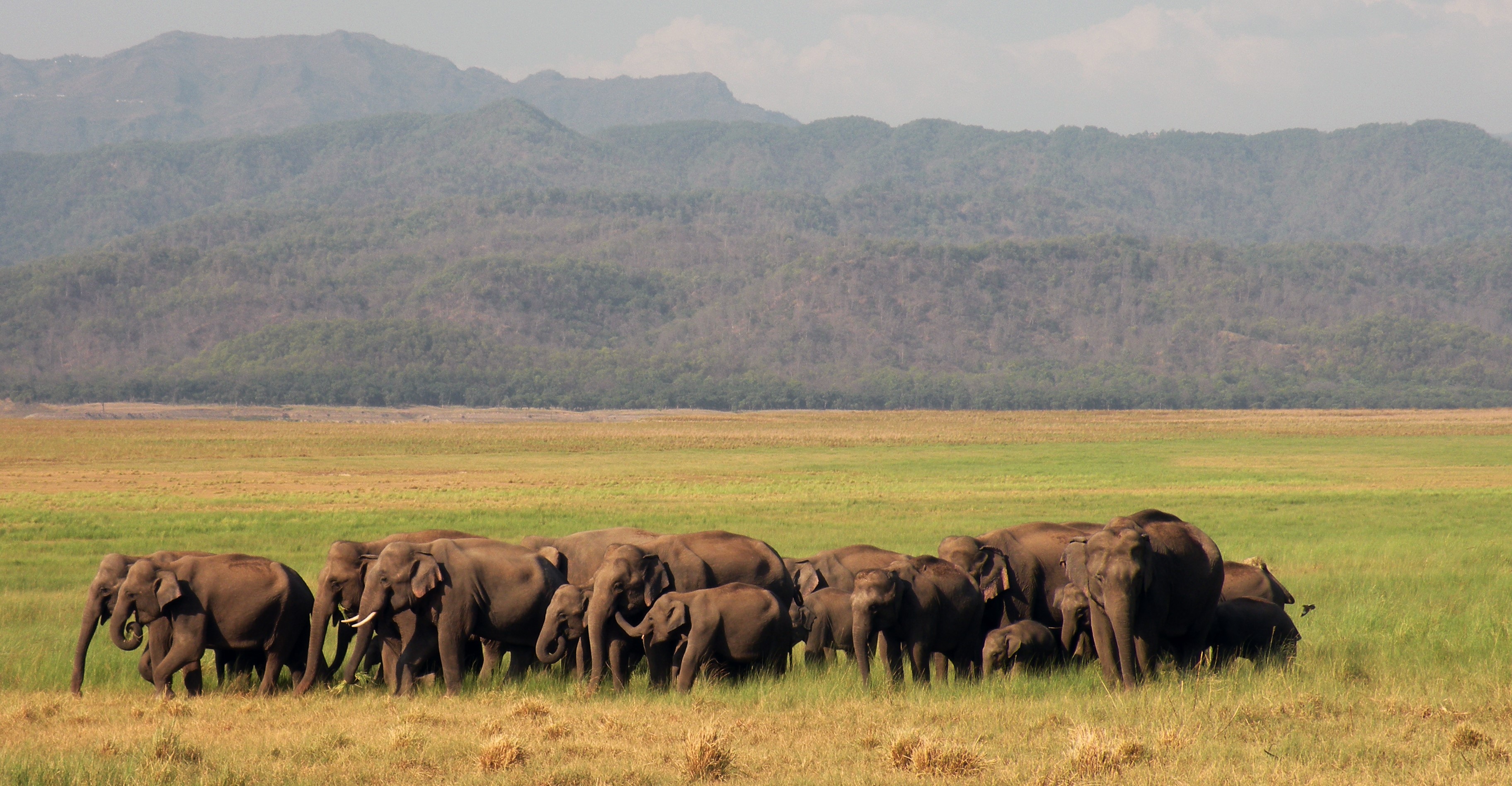Elephants are long-distance migrants. The populations in India, which make up 60% of the global Asian elephant population, began their migrations 100,000 years ago, gradually settling in different parts of the country. A record of these journeys can be found imprinted in the DNA sequences of today’s populations. By unravelling their genetic history to inform conservation needs, scientists are using knowledge of the past to help shape the future of this species, which has been classified as Endangered in the IUCN Red List since 1986.
To study the ancestry of these majestic creatures, researchers from Prof. Uma Ramakrishnan’s lab at the National Centre for Biological Sciences, Bangalore, in collaboration with Prof. Raman Sukumar from the Indian Institute of Science and others, analysed whole genome sequences from blood samples of elephants collected across landscapes in India. Their study identified five genetically distinct populations, dismissing earlier reports of only three to four. Two of these populations are located in Northern and Central India, while the other three are in Southern India, separated by the Palghat and Shencottah Gaps in the mountain ranges of the Western Ghats.
The genetic analysis also revealed that elephants historically migrated from Northern to Southern India. This dispersal was accompanied by a decline in genetic diversity at each step. Populations with lower genetic variation also had fewer disease-causing genetic variants. “But there is a catch here,” says Dr Anubhab Khan, co-lead author of the study, currently faculty at the Indian Institute of Science, Bangalore. At least in the southernmost populations, when these harmful variants are present, they are more likely to appear in both gene copies—one inherited from each parent—leaving no healthy variant to mask their effect. “These are fewer in number but they may get expressed quite often,” he adds.
The most likely explanation for these observations is a serial founder effect, where fewer individuals from each starting population migrate and establish the next one. Resulting populations are often small, with an increased risk of inbreeding depression, a phenomenon in which harmful genetic variants are more likely to be inherited from both parents due to breeding among related individuals. Located south of the Shencottah Gap, the most recently established population has the lowest genetic diversity and the highest risk of inbreeding depression. “There may be very few elephants–around 150,” cautions Prof. Ramakrishnan. “It is at a higher chance of going extinct.”
Prof. Sukumar agrees but points to some promising exceptions to assumptions regarding low genetic variation and extinction risks in elephant populations. One example comes from Sabah on the island of Borneo, which is home to over 1,000 elephants. Despite their extremely narrow genetic base derived from only a few individuals, they have remarkably survived and multiplied. Another example is the Addo elephants in South Africa, which have grown from just 11 individuals about a century ago to over 600. He emphasises the need for more studies on elephant genomes to inform management strategies.
Protecting our elephants, the largest land mammals, requires understanding their population structures and how they change over time. The five populations identified in this study represent five conservation units. “The elephants in each of these regions would need to be managed separately, given that they show some degree of genetic distinctiveness,” explains Dr Alfred Roca, a conservation geneticist at the University of Illinois at Urbana-Champaign who was not involved in the study.
Geographic patterns like these are uncommon in large mammals like elephants because their long-range movements tend to blur any distinctions. The presence of five genetically and geographically defined populations suggests that natural barriers may have kept them apart, allowing them to evolve separately. Alternatively, this genetic variation could reflect an ancient population distribution as today’s elephants arguably roam more extensively, mainly in search of habitats increasingly fragmented by human activity. Dr Khan insists that we need to know the population sizes and genetic compositions of ancestral populations that were flourishing, as these become targets for restoring today’s threatened populations.
Accurate monitoring is key for such efforts to be effective, and this begins with precise population counts to replace the vague estimates currently in use. To achieve this, Dr Khan and Prof. Ramakrishnan plan to develop a genetic toolkit based on the findings from this study that can identify individual elephants in the wild using DNA from their faecal samples. This tool would be a game-changer for conservation efforts by enabling the tracking of individual elephants and monitoring of population health, giving India’s elephants a better shot at a thriving future.
Full Link to the Study: https://bit.ly/3zExHC5









0 Comments